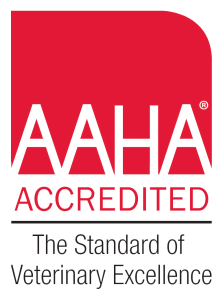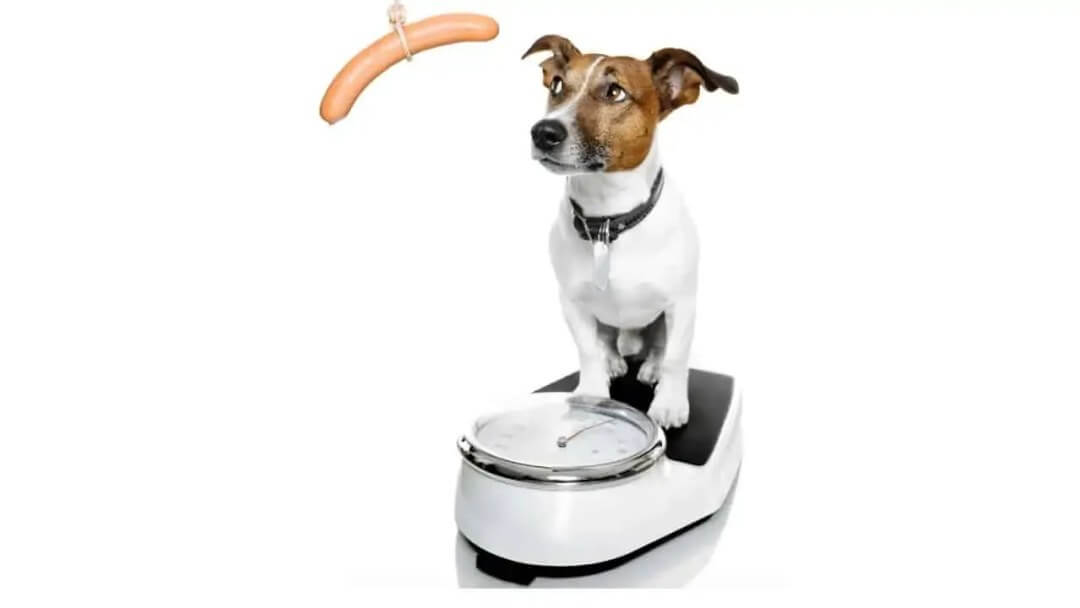
“The Pet Weight Problem”
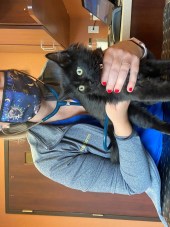
Written by Dr. Harris (Brook-Falls)
One of the most asked questions at the vet office include “Is Fluffy a good weight?” or “How much should I feed Fluffy?” Unfortunately, we see a lot of overweight dogs and cats as veterinarians. Recent studies have shown that 1 in 3 cats and dogs in the United States are overweight. So the real question is “What can we do for these beloved family members to make sure they live a long and healthy life?”
Using the Pet Condition Score Chart: Is My dog the right weight?
In order to determine if a pet is a good weight, we evaluate their body condition score (see photos below). This is done by feeling how much fat is over their ribs and looking for a tuck-in their abdomen from the side and a waist in their abdomen from above. The scale varies from a score of 1 to 9. A score of 1 means a patient is severely underweight whereas a score of 9 means a patient is obese. The ideal body condition score is a 4 or 5. This body score can tell us a rough percentage of how much of a pet’s body weight is fat.
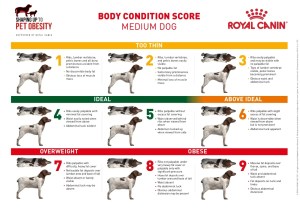
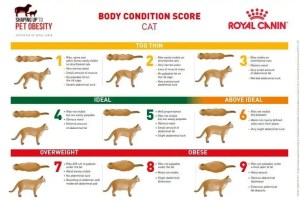
Why Should We Care if our Pet is Overweight?
The increased number of fat cells in an overweight pet releases a hormone that causes a chronic, low-grade inflammatory state in the body. This inflammation causes an increased risk for illnesses such as diabetes and heart disease. Functionally, carrying more weight can cause our pets to develop early-onset arthritis and they are more prone to developing an orthopedic disease like .
Most importantly dogs and cats who are at an ideal weight have been shown to live longer than their overweight counterparts. A study published in 2018 found that all 12 breeds in the study had a longer life span if they were kept at an ideal weight. Smaller dogs at an ideal weight see the most significant increase in an extended life span. For example, Yorkshire terriers lived on average 2 years longer if they were an ideal weight versus overweight.
How do I Avoid My Dog from Getting Overweight?
A good diet and a measuring cup are key to keeping our pets at the right weight. At Brook-Falls we recommend the brands that have veterinary nutritionists who formulate the diets and run food trials. These brands include Purina, Iams, Eukanuba, Hill’s Science Diet, and Royal Canin. You should feed a diet that is appropriate for your pet’s life stage (puppy versus adult versus senior). We recommend meal feeding your pets and weighing the food with a measuring cup at every meal. Some dogs and cats can be free-fed and maintain a healthy weight, but this is the exception and not the rule.
The back of the bag of food should have a table that can help you calculate how much food to feed in one day and that can be split into 2-3 meals. Your veterinarian can also help calculate how many calories your pet should get per day based on calculating their energy requirement in kilocalories. For small dogs and cats who need very small amounts measured at every meal (such as 1/8 of a cup), it is more accurate to measure out their food in grams on a kitchen gram scale. Your veterinarian can help you calculate how many grams to feed your pet at every meal if your pet needs a small amount measured out in order to be as accurate as possible.
Treats and table scraps are something that should be watched very closely. Treats have calories too and should be calculated into a part of your dog’s daily allowance of calories. Dental chews are often overlooked as a source of calories. A regular size dental treat can have as many as 90 calories for one treat. It is important to remember that there are other ways to show our dogs we love them besides giving treats such as long walks or time spent playing tug of war or throwing the ball. There are also healthy, low calorie treat options such as a baby carrot, a fresh green bean, blueberries, or a small slice of apple.
What if my dog is already overweight?
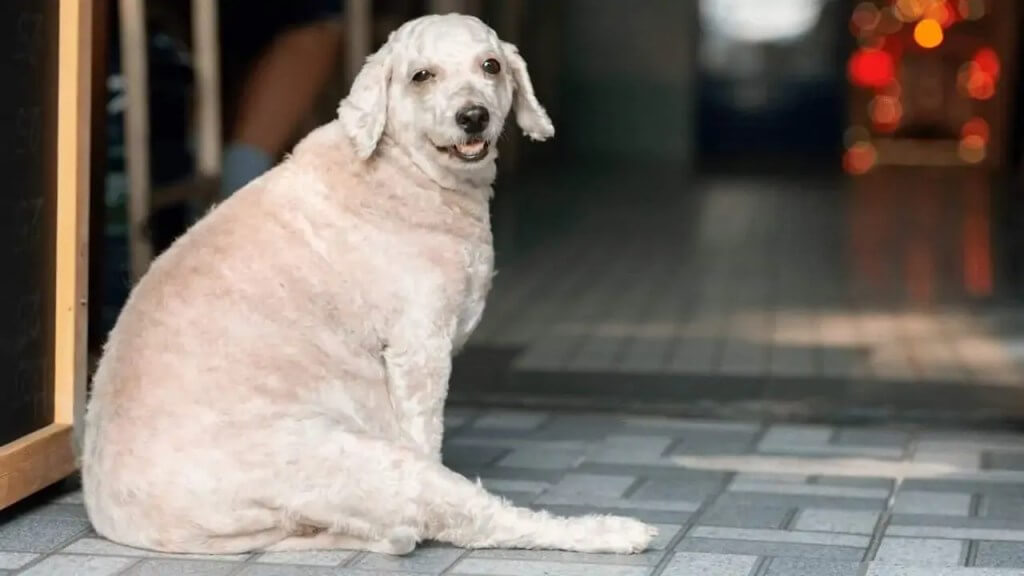
There are a lot of ways we can work as a team to get your pet to its perfect weight. It is important to discuss the routine of feeding Fluffy. Who feeds Fluffy – do all family members and is it possible he is getting an extra meal? How do we measure Fluffy’s food – do you measure out an exact amount or just estimate? What is Fluffy’s activity like at home? What does a normal day in the life of Fluffy look like? Answering these questions can help us implement changes that can help Fluffy achieve weight loss.
There are several prescription veterinary diets that can help facilitate weight loss. We recommend these in dogs that have a lot of weight to lose because just cutting back on a regular diet can restrict nutrients that your pet is receiving. Therapeutic weight loss diets have increased protein which can help to preserve muscle mass. These diets are higher in fiber to make your pet feel fuller. They are overall lower in fat but have more nutrients per calorie to ensure your pet is getting the nutrients they need but are still able to lose weight.
Weight loss takes time and should happen gradually. A safe rate of weight loss is 1-2% of your pet’s body weight per week. It is important to weigh and monitor body condition regularly to make sure we are making progress. Remember that your pet did not become overweight overnight and it will take time to lose the weight as well. Progress should be celebrated and remember that our goal is to make your pet live a full and healthy life for years to come!
About Brook-Falls
Brook-Falls Veterinary Hospital and Exotic Care is dedicated to providing quality care to all companion pets and exotic animals. Brook-Falls is a Menomonee Falls, WI-based full-service veterinary hospital with an extensive range of comprehensive medical, dental, diagnostic, and surgical services to meet the varying needs of all patients. Brook-Falls Veterinary also offers informational and educational media and seminars for pet owners by way of blogs, digital TV series (Expert Veterinary Television), e-books, whitepapers, infographics, and more.
For more information, contact Brook-Falls Veterinary Hospital & Exotic Care, I
